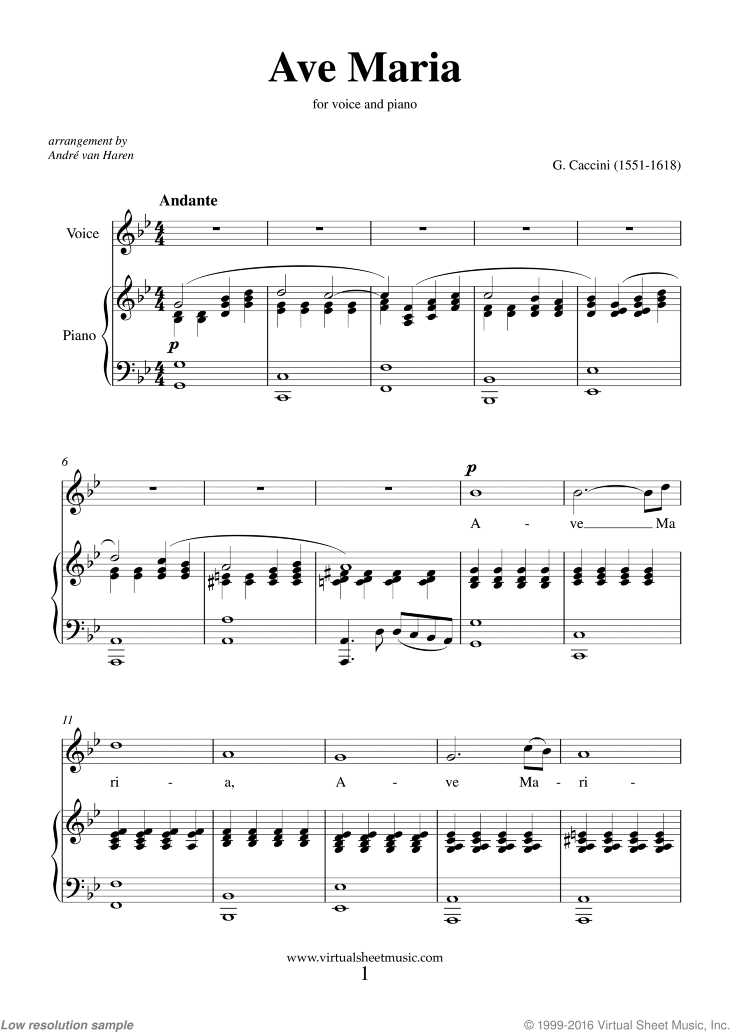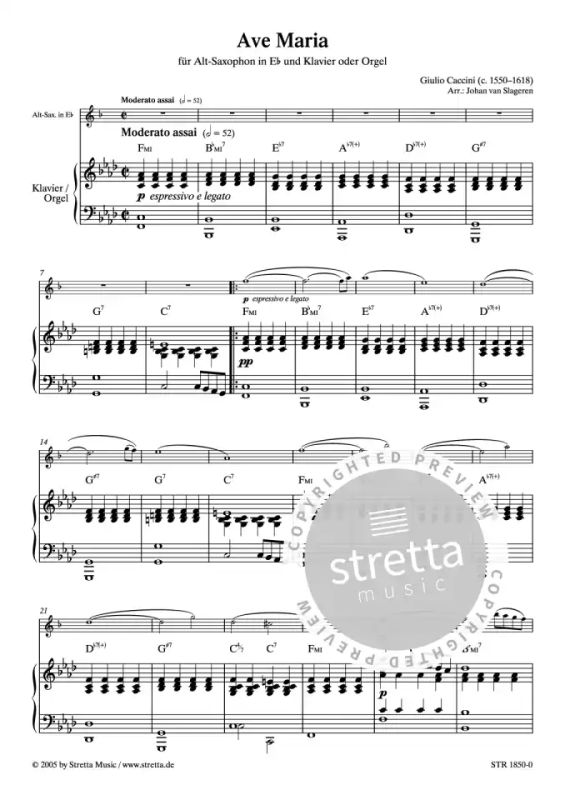
CACCINI AVE MARIA ORGAN DOWNLOAD
Organ, Voice, Medium voice, Organ - Intermediate - Digital Download Composed by Giulio Caccini (1545-1618). We recommend that you contact your local customs or import office for further information. We do not refund customers who refuse shipments or return items because they do not want to pay customs or import taxes.


The person who received the order is responsible for paying all customs or import tax. For all international shipments, we identify the order contents and cost of the order on the custom form, however, we have no control over whether your country will charge customs or import tax when the package arrives. Packages delivered outside the US may incur customs or import taxes.
CACCINI AVE MARIA ORGAN REGISTRATION
Dull registration and stodgily coupled pedals create the kind of impression an imaginative player would hope to avoid on an average parish church two-manual. The various Ave Marias are not such as to invite instant replay, and Puccini’s Salve regina seems just about to get beyond the first page of the Intermezzo from Cavalleria rusticana (which it antedates) when it stops.Īll items are performed to accompaniments played on the organ of Riga Cathedral, which one might conclude to be an instrument of limited resources till reading the note which tells of its “4 manuals, 124 registers and 6718 pipes”. The three ‘cantatas’ by Jazeps Vitols are said to date from 1935 and the years immediately following, but if a typographical error had substituted an 8 for the 9 little about the sound of the pieces would have made it seem unlikely they have perhaps the dignity of a sincere plainness. Otherwise it can hardly be said that the music excites curiosity of any kind. It might be interesting to inspect the composer’s (“ c1600”) manuscript. The last is listed as Caccini’s Ave Maria and will assuredly achieve fame as the theme music for an airline or pizza commercial before long: it carries a strong suggestion of Jerome Kern (“You are the honeyed breath of evening”) while shimmering in candlelight and voluptuous piety. The music itself, by Paula Licite, offers a choice of idioms, none of them requiring too much by way of concentration but combining an accustomed pleasure with a sense of something new. In the first, women’s voices add an ethereal but by no means sexless element to the religious associations of the organ, and the solo soprano’s voice enters, rather like Tosca’s in the cantata, thrillingly the star. Both are settings of the Ave Maria (as, indeed, are most of the other tracks).

The first track and the last are just the sort of thing it likes. The market may have something to say about this.


 0 kommentar(er)
0 kommentar(er)
